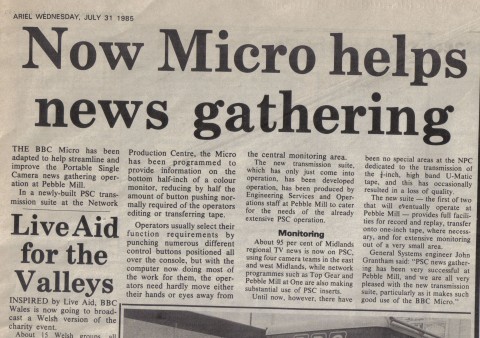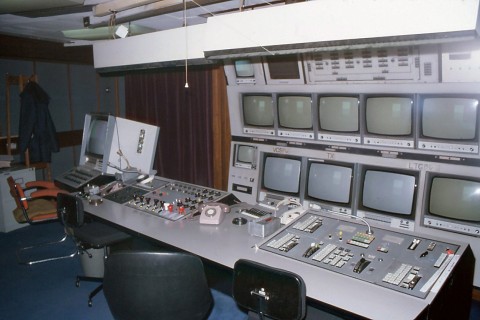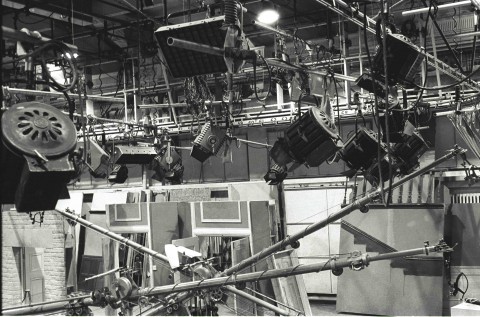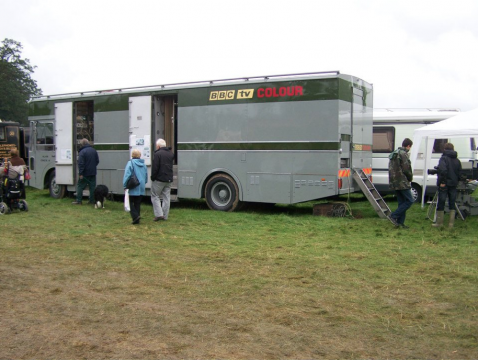
Copyright resides with the original holder, no reproduction without permission.
Thanks to Pete Simpkin for making this cutting from the BBC in-house newspaper, Ariel, available.
The article from 1985 is about how the BBC Micro computer has been helping the editing and transmission of News stories shot on portable single camera, instead of on other formats, like reversal film.
The following information was added by the members of the Pebble Mill Facebook Group:
Stuart Gandy: ‘I remember it well. The BBC Micro was put to good use here and was a software control system that was in use at Pebble Mill well before many of the later systems that have become the norm over the years. The system was designed and built mostly by John Macavoy and Ian Sykes and the other engineers who were based in G41, who at that time mostly concentrated on the Post Prod systems. (I’m not sure if we even called it post prod then?)’
Keith Brook: ‘John Macavoy told me that when the ‘boffins’ at SP&ID talked to him about interfacing his system with the 1″ machines, all they could come up with was a system controlled by relays!! They were decades behind John. Brilliant man!!’ SP&ID stood for ‘Special Projects and something Department. It was a bunch of technicians who designed equipment in-house for the BBC. They made vision mixers, edit suites and stuff like that before the era of buying gear off the shelf. Eventually, I suppose the regime of the awful John Birt closed them down because they couldn’t afford to pay an accountant. They designed the original vision mixing desks in both studios. They also designed the successor to the ‘Studio A’ type desk that was installed at TC and Oxford Road. It was a disaster and kept cutting to black. Not good for live ‘Brass Tacks’.’
Ray Lee: ‘I think a confusion of 2 names for the department have been made. Originally when colour started there were insufficient engineers to equip all the studios. A specialist department was set up called P&ID which was for Planning and Installation Department (known by some as Panic and Indecision Department) . All the first generation colour equipment was made in house by the BBC’s own manufacturing unit, which was part of the Research and Development unit. Later I think after the Phillips report in the late 70’s some re-organisation was done and the P&ID was renamed SCPD. (Studio Capital Projects Department). By this time the BBC was buying in some commercially produced equipment, and quite a lot of BBC designs were licenced out to third party companies.’
Stuart Gandy: ‘As well as SCPD, which was mostly concerned with TV there was also a section called RCPD, which was Radio Capitol Projects. At Pebble Mill, a projects department was set up in the mid 80s and run by John Macavoy and Ian Sykes, together with other engineers who rotated through. They were responsible for many of the bigger home done projects as well as becoming very adept at making the scoring systems for most of the game and quiz shows we did. I can remember working on a few of these quiz systems which usually consisted of a computer, often the BBC micro connected to big buttons for the contestants to press and lamps to show the scores.’





